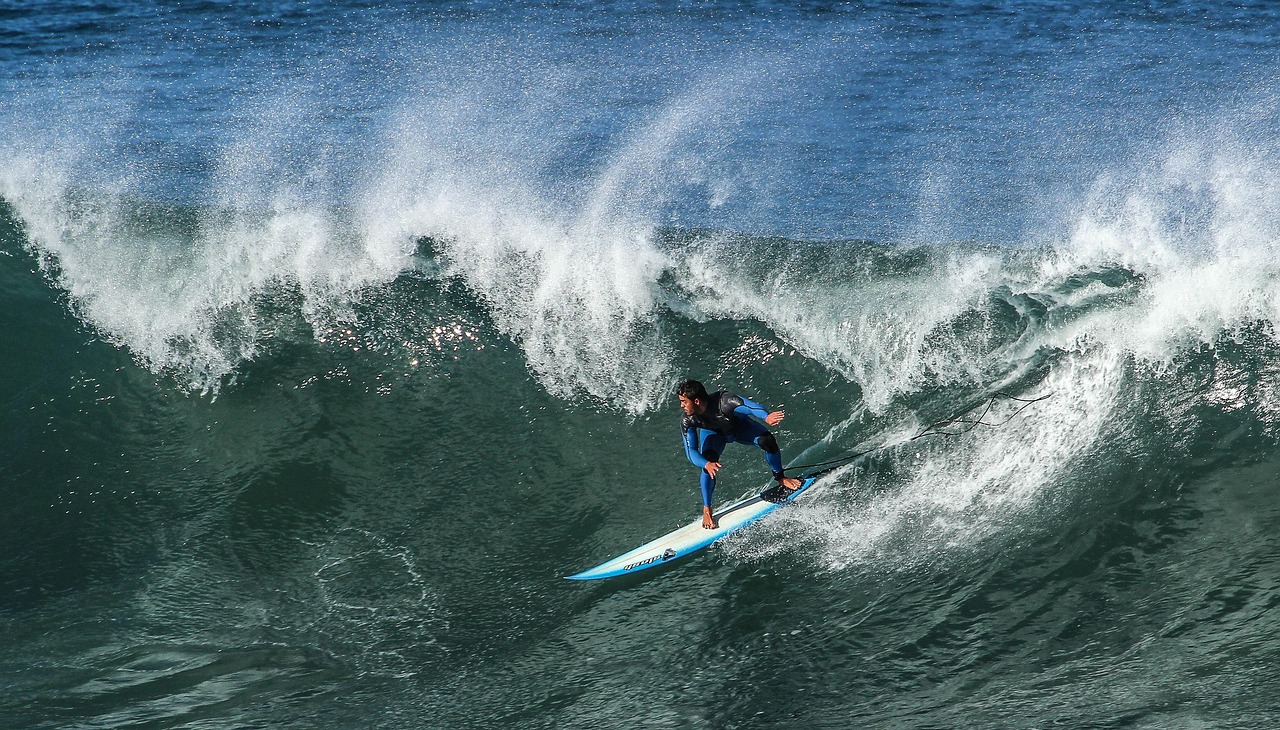Feeling the ocean’s energy, gliding over waves, and experiencing pure adrenaline—these are the sensations that draw thousands of people to surfing. But if you’re just starting out, this world can seem a little intimidating. After all, there are so many boards, terms, and techniques that it’s hard to know where to begin.
If you’ve always dreamed of learning to surf but haven’t taken the plunge because of fear or uncertainty, know that this guide is for you. Here, we’ll break everything down and show you that with the right guidance, practice, and dedication, **anyone can become a real surfer!** 🏄♂️
—
1. Pick the Perfect Board for Beginners
The first step in surfing is choosing the right board. For beginners, the best choice is a **”softboard”** (also known as a foam board). They’re bigger, wider, and more stable, which makes it easier to balance and reduces the risk of injuries.
Avoid starting with short, thin boards; they demand more skill and balance. Longer boards, around **7 to 9 feet**, really help those first steps in the water.
Also, look for a board with good floatation – this helps a lot when you’re paddling and catching waves. And remember: you can always get help from an instructor to figure out the best board for your size and goals.
Example: An 8-foot softboard is perfect for adults up to 200 lbs (90 kg) who are just starting out.
—
2. Why Stretching and Fitness Are Key
Surfing demands **endurance, balance, and flexibility**. So, keeping your body prepared is super important to avoid injuries and perform better on the waves.
Before you hit the ocean, do a **full-body stretch**, especially focusing on your lower back, shoulders, neck, and legs. This will warm up your muscles and make you feel looser in the water.
Besides stretching, activities like **swimming, yoga, and Pilates** are awesome for improving your fitness and breathing.
🏋️♀️ Suggested Warm-up:
- 10 minutes of light jogging
- Dynamic stretching
- Core strengthening exercises (abs and lower back)
—
3. Learn to Respect the Ocean and Its Conditions
Before you get in the water, it’s crucial to **observe the ocean and understand its conditions**. This will keep you safe and help you pick the best time to surf.
Look out for:
- Wave height and frequency
- Rip currents (strong currents pulling away from shore)
- Presence of rocks or obstacles
- Where other surfers are positioned
Apps like Surfline and Windguru are super helpful for checking wave, wind, and tide forecasts. This makes a huge difference when planning your surf session!
—
4. Basic Techniques for Standing Up on the Board
One of the biggest questions beginners have is how to get up on the board. This move is called the **”take-off”** and it takes practice and coordination.
Step-by-step for the take-off:
- Lie on the board with your body centered.
- As you paddle, feel the wave push you forward.
- Place your hands on the board near your chest.
- Push your body up and bring your front foot forward first.
- Keep your knees slightly bent and look straight ahead.
Practice this movement on the sand many times before you hit the water. With time, it’ll become second nature!
—
5. Develop Balance and the Ideal Stance
The secret to surfing well is **balance**. To achieve it, keep your knees bent, arms open, and always look forward.
Avoid looking down at your feet or the board – that throws off your center of balance. Keep your feet positioned over the back fins (skegs) and distribute your weight evenly.
Exercises to improve balance:
- Skateboarding or longboarding
- Practicing slackline
- Using balance boards
—
6. Board and Body Care After Surfing
After a good surf session, it’s important to take care of both your board and your body. This ensures your equipment lasts longer and you stay healthy.
Board care tips:
- Rinse your board with fresh water.
- Avoid leaving it in direct sunlight for too long.
- Store it in a dry, protected place.
For your body:
- Do a post-session stretch.
- Hydrate well.
- Use sunscreen, even on cloudy days.
—
Conclusion
Starting to surf might seem challenging, but with the right guidance, you can make the most of every moment on the waves. Choosing the right equipment, respecting the ocean, developing basic skills, and taking care of your body are all essential steps for your progress.
Remember: no one is born a pro. Every great surfer was once a beginner – and the most important thing is to have fun with the process. The ocean is a great teacher, and every wave brings a new lesson.
So, take a deep breath, grab your board, and go live this incredible experience. Surfing is waiting for you! 🌊🤙

